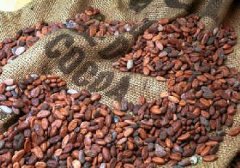Coffee flavors from different coffee producing areas around the world coffee producing areas in Brazil
Brazil

Brazil has been figuratively compared to the coffee world's "giants" and "kings." There are about 3.97 billion coffee trees, and small farmers now grow 75 percent of the country's coffee. Brazil has twice or even three times as many coffee producers as Colombia, which is the world's second-largest coffee producer.
Coffee from Brazil:
Old bourbon coffee is grown on estates in Cerrado district of Minas Greais state in southeastern Brazil. Old bourbon coffee grown on these estates, such as Capin Branco and Vista Allegre, is also sold in the market. Although they come from the same region, these coffees have their own characteristics. Capin Blanco is softer than Vista Allegra, which is strong and dark and relatively low in acidity. However, like all Brazilian coffees, they are best served fresh because the older they are, the stronger the acidity. These coffee growers have organized themselves into the Specialty Coffee Association of Brazil.
Because of the variety of Brazilian coffee, the word "Brazilian" cannot be used to describe it. Like other Arabica coffees, Brazilian coffee is called "Brazils" to distinguish it from "Milds" coffee. The vast majority of Brazilian coffee is unwashed and sun-dried, and is classified according to the state of origin and port of shipment. Brazil has 21 states, 17 of which produce coffee, but four of them produce the most, accounting for 98% of the country's total production: Parana, Sao Paulo, Minas Gerais and EspiritoSanto. Parana in the south produces the most, accounting for 50% of the total production.
Features of Brazilian Coffee:
Although coffee is diverse, Brazilian coffee is suitable for the taste of the masses. For example: coffee produced in northern coastal areas has a typical iodine taste, reminiscent of the sea after drinking. This coffee is exported to North America, the Middle East and Eastern Europe.
Flavor: There are many varieties and flavors, but most of them are low acidity coffee, and the taste is smooth
Recommended baking methods: low to deep baking, suitable for a variety of uses
Important Notice :
前街咖啡 FrontStreet Coffee has moved to new addredd:
FrontStreet Coffee Address: 315,Donghua East Road,GuangZhou
Tel:020 38364473
- Prev

Coffee flavors from different coffee producing areas around the world coffee producing areas in Honduras
Coffee in Honduras is imported from El Salvador. Coffee production in Honduras increased significantly after the Brazilian frost in 1975, more than tripling in 20 years. Coffee production in Honduras: as elsewhere, the coffee grade in Honduras depends on altitude: coffee grown at an altitude of 700m to 1000 m is medium.
- Next

Coffee flavors from different coffee producing areas around the world coffee producing areas in Tanzania
In Tanzania, due to political instability and rampant diseases and insect pests, the coffee industry in Tanzania has been damaged, leading to a decline in the overall level and instability of coffee quality, which in turn has led to a reduction in prices. the result of lower prices is usually a further decline in the coffee industry. What's more, it is estimated that more than 12% of the Arabs grown in northern Tanzania from 1969 to 1985
Related
- Detailed explanation of Jadeite planting Land in Panamanian Jadeite Manor introduction to the grading system of Jadeite competitive bidding, Red bid, Green bid and Rose Summer
- Story of Coffee planting in Brenka region of Costa Rica Stonehenge Manor anaerobic heavy honey treatment of flavor mouth
- What's on the barrel of Blue Mountain Coffee beans?
- Can American coffee also pull flowers? How to use hot American style to pull out a good-looking pattern?
- Can you make a cold extract with coffee beans? What is the right proportion for cold-extracted coffee formula?
- Indonesian PWN Gold Mandrine Coffee Origin Features Flavor How to Chong? Mandolin coffee is American.
- A brief introduction to the flavor characteristics of Brazilian yellow bourbon coffee beans
- What is the effect of different water quality on the flavor of cold-extracted coffee? What kind of water is best for brewing coffee?
- Why do you think of Rose Summer whenever you mention Panamanian coffee?
- Introduction to the characteristics of authentic blue mountain coffee bean producing areas? What is the CIB Coffee Authority in Jamaica?

